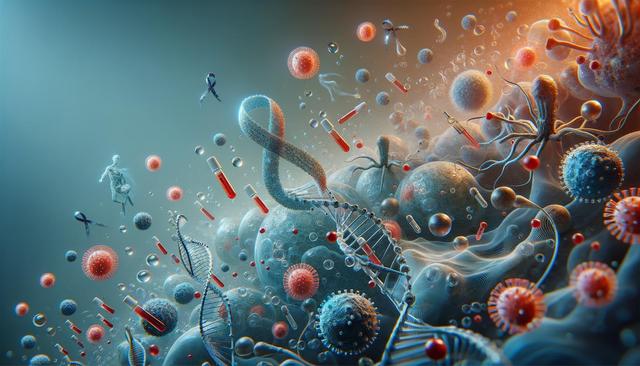Understanding the Early Signs of HIV: What to Look For
Early signs of HIV may include flu-like symptoms such as fever, sore throat, fatigue, swollen lymph nodes, and rash. These symptoms usually appear 2–4 weeks after exposure. As the virus progresses, it can weaken the immune system, leading to more serious infections and complications.

Recognizing the Initial Flu-Like Symptoms
One of the first indicators of HIV infection is a cluster of flu-like symptoms. These symptoms, also referred to as acute retroviral syndrome (ARS), typically emerge within two to four weeks after the virus enters the body. During this stage, the immune system reacts to the virus with an inflammatory response, which may resemble a common viral infection. Some of the most frequently reported symptoms include:
- Fever
- Chills
- Night sweats
- Sore throat
- Headaches
- Muscle and joint pain
While these signs are not exclusive to HIV and can be mistaken for other illnesses, their appearance shortly after a potential exposure should prompt further medical evaluation. It is important to note that not everyone experiences these early symptoms, making regular testing essential for those at risk.
Skin Rashes and Other Dermatological Changes
Another common early sign of HIV is a skin rash. This rash can vary in appearance and typically presents as small, red bumps or flat patches, often accompanied by itchiness. It may appear on the torso, face, arms, or legs. In some cases, the rash may be mistaken for an allergic reaction or a side effect of medication. Other skin-related symptoms linked to early HIV include:
- Mouth ulcers
- Genital sores
- Scaly patches on the skin
- Increased sensitivity to sunlight
Because skin conditions can stem from many causes, it’s essential to consider them in the context of other symptoms and potential HIV exposure. A healthcare provider can help determine whether these signs warrant further testing.
Persistent Fatigue and General Malaise
Fatigue is a symptom that many people with early HIV report. This is not just ordinary tiredness but a deep, persistent exhaustion that doesn’t improve with rest. The body’s immune response to the virus can leave individuals feeling drained and lacking energy. People may also experience:
- Reduced ability to concentrate
- Unexplained weakness
- Loss of interest in daily activities
Since fatigue can be linked to numerous physical and emotional health issues, it is often overlooked as a symptom of HIV. However, when coupled with other early indicators, it becomes a more telling sign and should be investigated further.
Swollen Lymph Nodes and Their Significance
Swollen lymph nodes are another early signal that the body is fighting an infection. These small, bean-shaped glands are part of the immune system and are located throughout the body, including in the neck, armpits, and groin. When infected with HIV, the immune system becomes highly active, causing lymph nodes to swell. Key characteristics of this symptom include:
- Swelling that lasts more than a week
- Nodes that are tender or painful to the touch
- Swelling that occurs in more than one area
While swollen lymph nodes alone are not definitive proof of HIV, they are a common early feature that, when combined with other signs, can help guide a diagnosis. Medical consultation and testing remain the best ways to confirm the cause.
Gastrointestinal and Neurological Symptoms
In some individuals, early HIV can also present with symptoms that affect the digestive and nervous systems. Gastrointestinal symptoms may include:
- Diarrhea
- Nausea
- Loss of appetite
- Unintentional weight loss
These issues result from the immune system’s response to the virus and may contribute to the general feeling of being unwell. Additionally, some people experience neurological symptoms such as:
- Confusion or difficulty concentrating
- Memory issues
- Dizziness
Although these symptoms are less common in the earliest stages, their presence can signal that the virus is affecting more than just the immune system. Monitoring these changes and discussing them with a healthcare provider is important for early intervention.
Conclusion: The Importance of Awareness and Testing
Understanding the early signs of HIV is crucial for timely diagnosis and management. Since many of the symptoms mimic common illnesses, they can easily go unnoticed or be misattributed. Paying attention to persistent changes in the body—especially after a potential exposure—can help individuals seek medical advice sooner. Regular testing remains the most reliable way to detect HIV early, even in the absence of symptoms. Staying informed and proactive is key to maintaining long-term health and preventing further transmission.